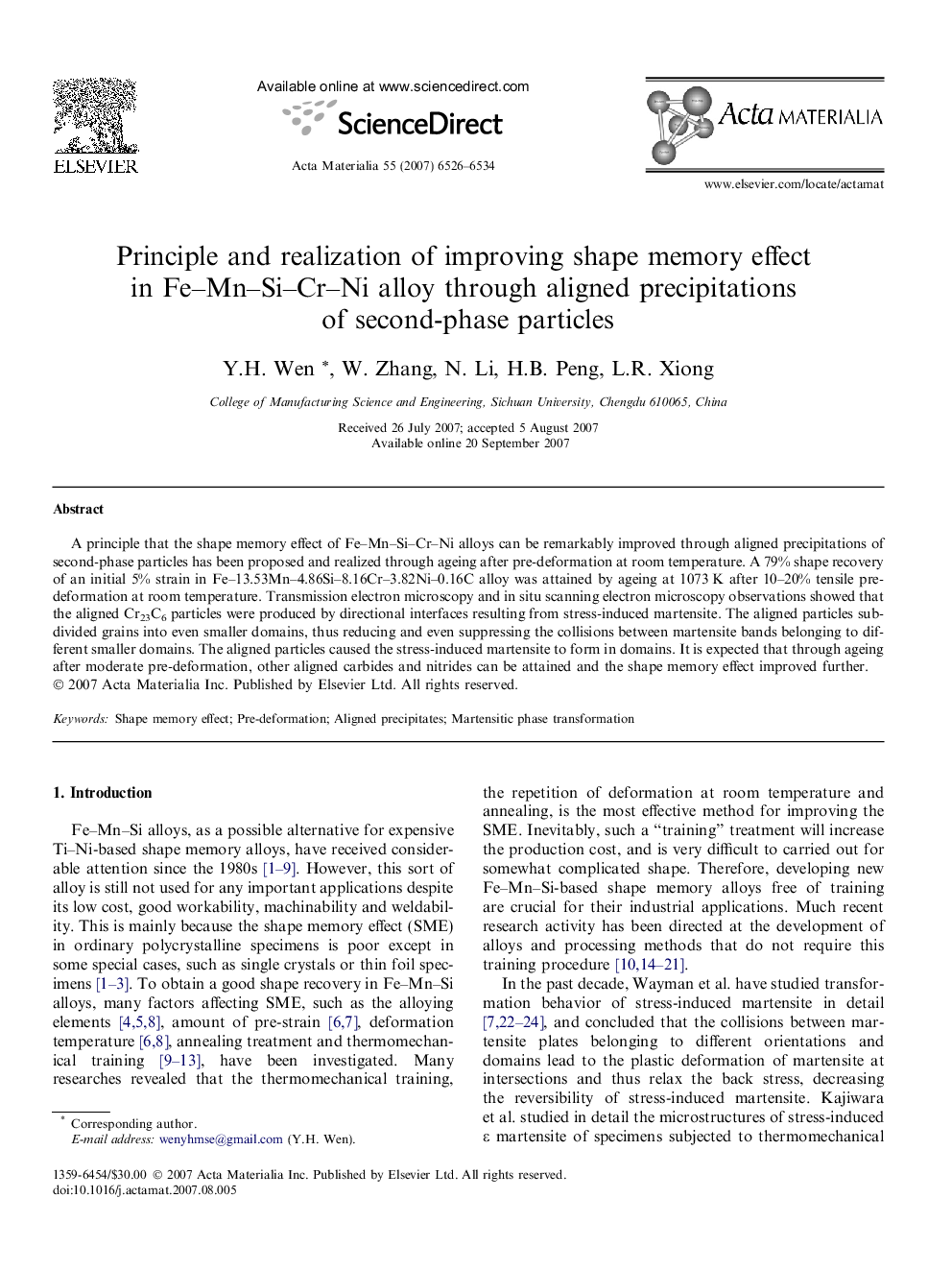| Article ID | Journal | Published Year | Pages | File Type |
|---|---|---|---|---|
| 1449520 | Acta Materialia | 2007 | 9 Pages |
A principle that the shape memory effect of Fe–Mn–Si–Cr–Ni alloys can be remarkably improved through aligned precipitations of second-phase particles has been proposed and realized through ageing after pre-deformation at room temperature. A 79% shape recovery of an initial 5% strain in Fe–13.53Mn–4.86Si–8.16Cr–3.82Ni–0.16C alloy was attained by ageing at 1073 K after 10–20% tensile pre-deformation at room temperature. Transmission electron microscopy and in situ scanning electron microscopy observations showed that the aligned Cr23C6 particles were produced by directional interfaces resulting from stress-induced martensite. The aligned particles subdivided grains into even smaller domains, thus reducing and even suppressing the collisions between martensite bands belonging to different smaller domains. The aligned particles caused the stress-induced martensite to form in domains. It is expected that through ageing after moderate pre-deformation, other aligned carbides and nitrides can be attained and the shape memory effect improved further.
